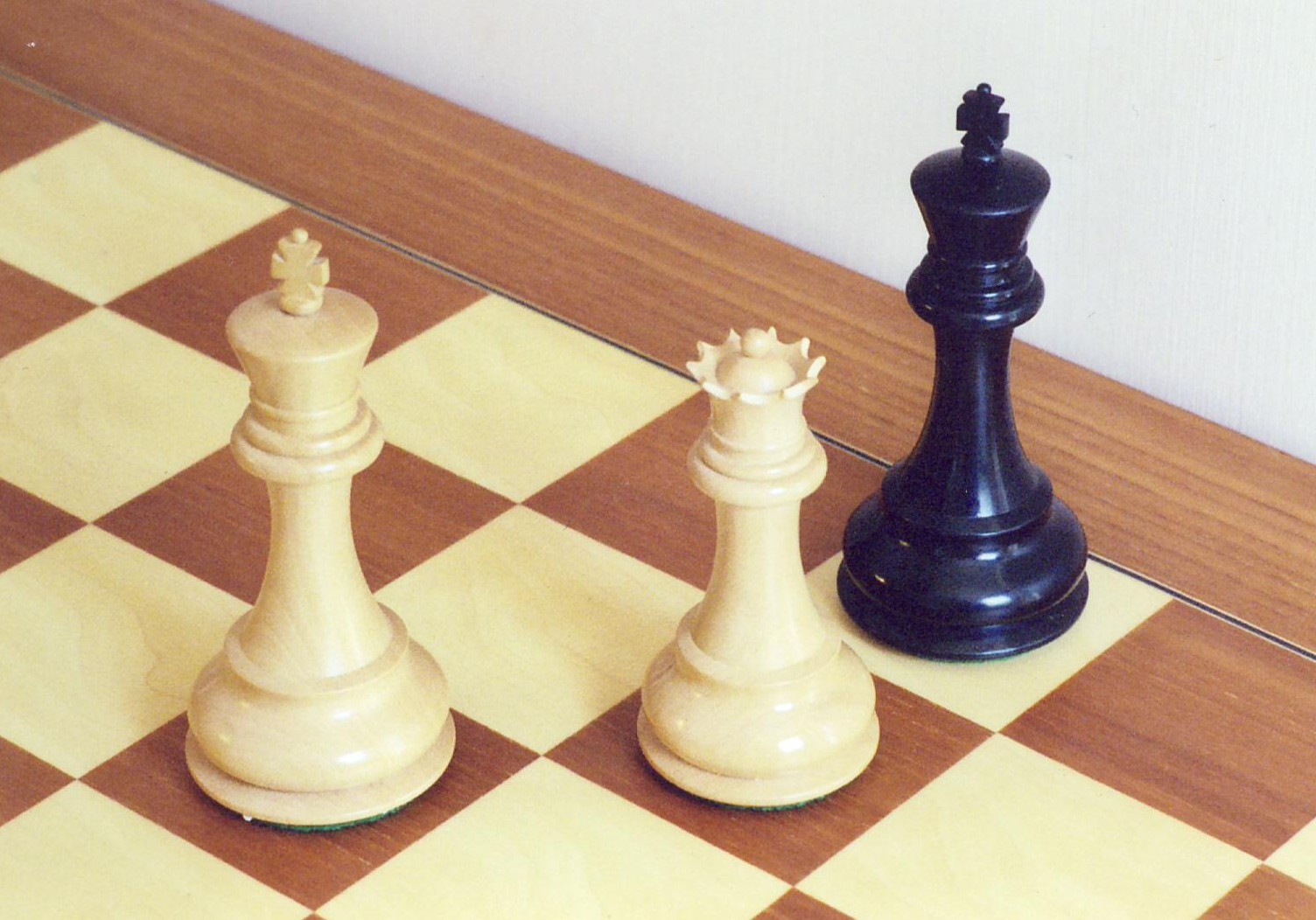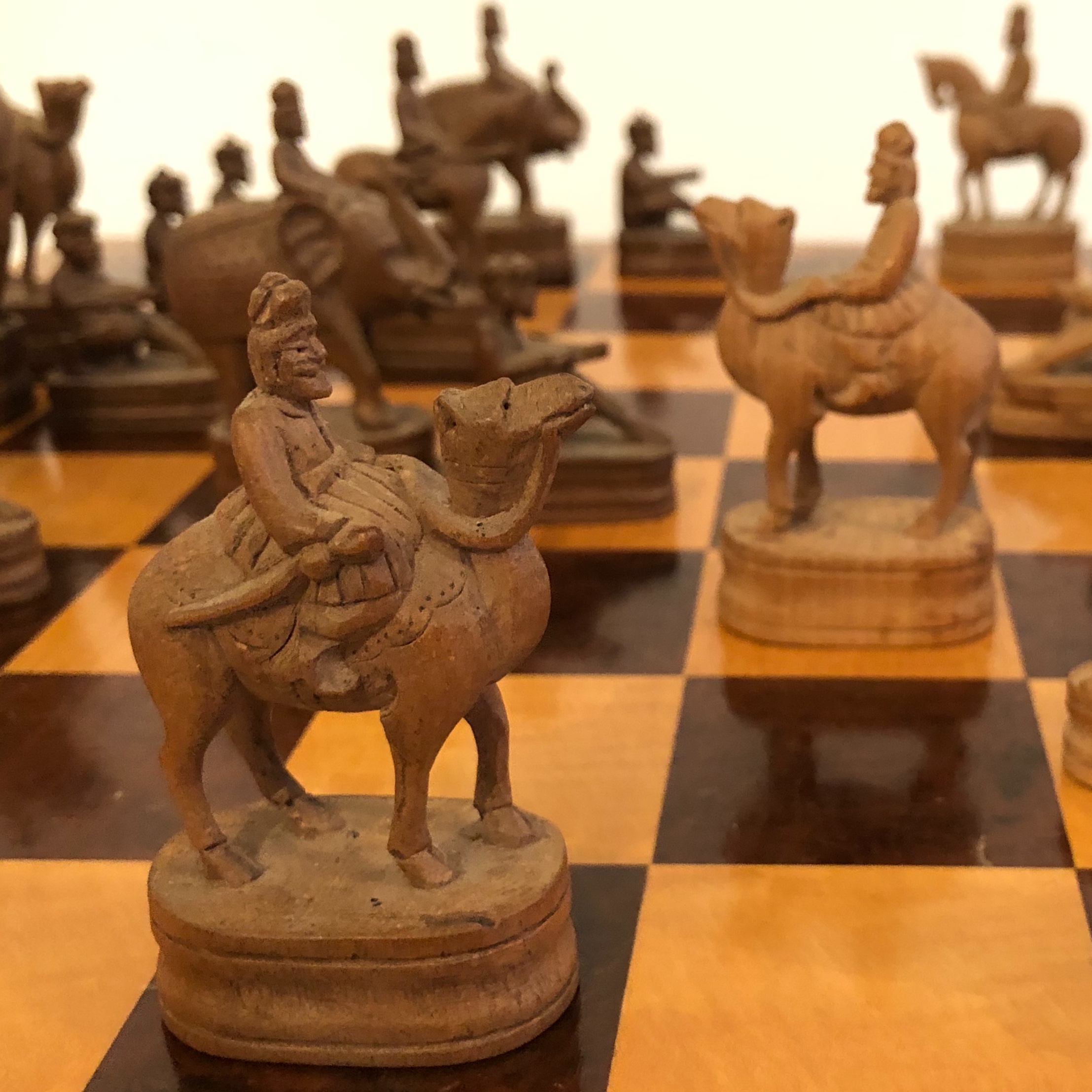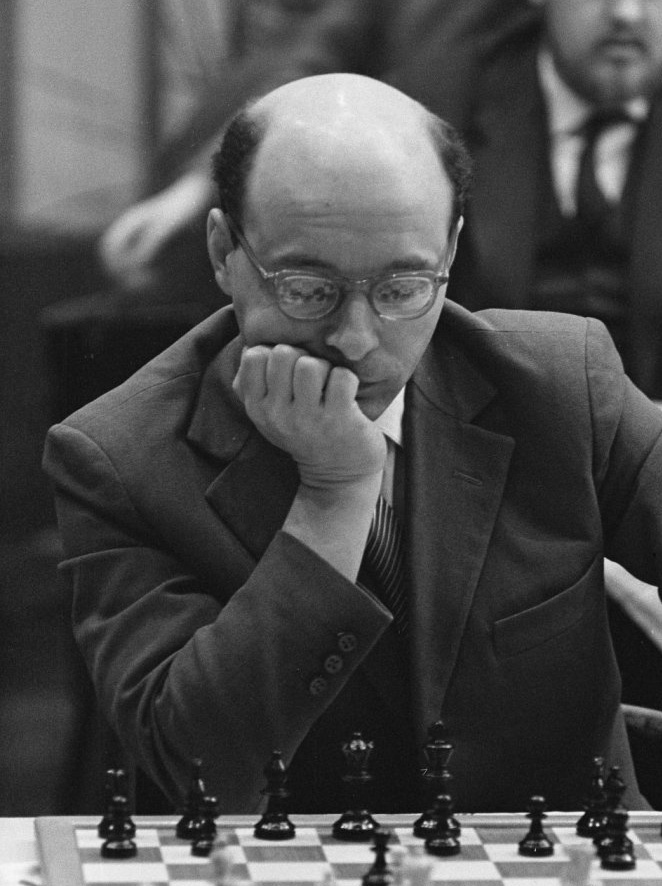|
Vienna Game, Frankenstein–Dracula Variation
The Frankenstein–Dracula Variation is a chess opening for Black, usually considered a variation of the Vienna Game, beginning with the moves: :1. e4 e5 :2. Nc3 Nf6 :3. Bc4 Nxe4 or it can be reached by transposition from the Bishop's Opening: :2. Bc4 Nf6 :3. Nc3 Nxe4 It involves many complications, but with accurate play is viable for both sides. The variation was given its name by Tim Harding in his 1976 book on the Vienna Game, in which he said that the bloodthirstiness of the character of play was such that "a game between Dracula and the Frankenstein Monster would not seem out of place." The line is rarely seen in top-level play. Jacob Øst-Hansen deployed it against John Nunn in Teesside 1972. Vasyl Ivanchuk used it against Viswanathan Anand in Roquebrune in 1992 in a game that ended in a draw. Alexei Shirov played it as Black in a simultaneous exhibition in Canada 2011. In 2019, Hikaru Nakamura played it in a rapid game in St. Louis against Jan-Krzysztof Du ... [...More Info...] [...Related Items...] OR: [Wikipedia] [Google] [Baidu] |
Vienna Game
The Vienna Game is an opening in chess that begins with the moves: :1. e4 e5 :2. Nc3 White's second move is less common than 2.Nf3, and is also more recent. The original idea behind the Vienna Game was to play a delayed King's Gambit with f4 (the Vienna Gambit), but in modern play White often plays more (for example, by fianchettoing their king's bishop with g3 and Bg2). Black most often continues with 2...Nf6. The opening can also lead to the Frankenstein–Dracula Variation. Weaver W. Adams famously claimed that the Vienna Game led to a for White. Nick de Firmian concludes in the 15th edition of ''Modern Chess Openings'', however, that the opening leads to with by both sides. Falkbeer Variation: 2...Nf6 After 2...Nf6, the Falkbeer Variation, White has three main options: 3.f4, 3.Bc4, and 3.g3. Note that 3.Nf3 transposes to the Petrov's Three Knights Game, which after 3...Nc6 leads to the Four Knights Game. 3.f4 At grandmaster level, the gambit move 3.f4 is ... [...More Info...] [...Related Items...] OR: [Wikipedia] [Google] [Baidu] |
Jan-Krzysztof Duda
Jan-Krzysztof Duda (; born 26 April 1998) is a Polish Grandmaster (chess), chess grandmaster. A Chess prodigy, prodigy, he achieved the grandmaster title in 2013 at the age of 15 years and . he is ranked No. 1 in Poland and No. 17 in the FIDE world rankings, world. His personal best Elo rating system, rating of 2760 makes him the highest ranked Polish player of all time. Duda won the Polish Chess Championship, Polish Championship in 2018 and the Chess World Cup 2021, Chess World Cup in 2021. He is a bronze medallist at the European Team Chess Championship in 2021 and he also competed in the Candidates Tournament 2022 finishing seventh. He was awarded the Cross of Merit (Poland), Golden Cross of Merit for his achievements in chess. Chess career 2007–2008 In 2007, Duda placed first in the U8 Polish Youth Championship chess tournament. In 2008, Duda won the World Youth Chess Championship in the under-10 category and as a result he was awarded the title of FIDE Master. The sa ... [...More Info...] [...Related Items...] OR: [Wikipedia] [Google] [Baidu] |
Checkmate
Checkmate (often shortened to mate) is any game position in chess and other chess-like games in which a player's king is in check (threatened with ) and there is no possible escape. Checkmating the opponent wins the game. In chess, the king is never actually captured. The player loses as soon as their king is checkmated. In formal games, it is usually considered good etiquette to resign an inevitably lost game before being checkmated. If a player is not in check but has no legal moves, then it is '' stalemate'', and the game immediately ends in a draw. A checkmating move is recorded in algebraic notation using the hash symbol "#", for example: 34.Qg3#. Examples A checkmate may occur in as few as two moves on one side with all of the pieces still on the board (as in fool's mate, in the opening phase of the game), in a middlegame position (as in the 1956 game called the Game of the Century between Donald Byrne and Bobby Fischer), or after many moves with as few as t ... [...More Info...] [...Related Items...] OR: [Wikipedia] [Google] [Baidu] |
Exchange (chess)
In chess, an exchange or trade of chess pieces is a series of closely related moves, typically sequential, in which the two players each other's pieces. Any type of pieces except the kings may possibly be exchanged, i.e. captured in an exchange, although a king can capture an opponent's piece. Either the player of the white or the black pieces may make the first capture of the other player's piece in an exchange, followed by the other player capturing a piece of the first player, often referred to as a ''recapture''. Commonly, the word "exchange" is used when the pieces exchanged are of the same type or of about equal value, which is an ''even exchange''. According to chess tactics, a bishop and a knight are usually of about equal value. If the values of the pieces exchanged are not equal, then the player who captures the higher-valued piece can be said to be ''up the exchange'' or ''wins the exchange'', while the opponent who captures the lower-valued piece is ''down the ex ... [...More Info...] [...Related Items...] OR: [Wikipedia] [Google] [Baidu] |
Sacrifice (chess)
In chess, a sacrifice is a move that gives up a piece with the objective of gaining tactical or positional compensation in other forms. A sacrifice could also be a deliberate exchange of a chess piece of higher value for an opponent's piece of lower value. Any chess piece except the king may be sacrificed. Because players usually try to hold on to their own pieces, offering a sacrifice can come as an unpleasant surprise to one's opponent, putting them off balance and causing them to waste precious time trying to calculate whether the sacrifice is sound or not, and whether to accept it. Sacrificing one's queen (the most valuable piece), or a string of pieces, adds to the surprise, and such games can be awarded . Types of sacrifice Real versus sham Rudolf Spielmann proposed a division between sham and real sacrifices: * In a ''real sacrifice'', the sacrificing player will often have to play on with less than their opponent for quite some time. * In a ''sham sacrifice'', ... [...More Info...] [...Related Items...] OR: [Wikipedia] [Google] [Baidu] |
Bishop (chess)
The bishop (♗, ♝) is a Chess piece, piece in the game of chess. It moves and captures along without jumping over interfering pieces. Each player begins the game with two bishops. The starting squares are c1 and f1 for White's bishops, and c8 and f8 for Black's bishops. Placement and movement The is placed on f1 for White and f8 for Black; the is placed on c1 for White and c8 for Black. The bishop has no restrictions in distance for each move but is limited to diagonal movement. It cannot jump over other pieces. A bishop captures by occupying the square on which an enemy piece stands. As a consequence of its diagonal movement, each bishop always remains on one square color. Due to this, it is common to refer to a bishop as a ''light-squared'' or ''dark-squared'' bishop. Comparison – other pieces Versus rook A rook (chess), rook is generally worth about two Pawn (chess), pawns more than a bishop. The bishop has access to only half of the squares on the board, w ... [...More Info...] [...Related Items...] OR: [Wikipedia] [Google] [Baidu] |
The Exchange (chess)
In chess, the exchange is the difference of a rook for a (i.e. a bishop or knight). Having a rook for a minor piece is generally advantageous, since the rook is usually more valuable. A player who has a rook for a minor piece is said to be ''up the exchange'', and the other player is ''down the exchange''. A player who wins a rook for a minor piece is said to have ''won the exchange'', while the other player has ''lost the exchange''. The opposing captures often happen on consecutive moves, but this is not strictly necessary. Although it is generally detrimental to lose the exchange, one may occasionally find reason to purposely do so; the result is an ''exchange sacrifice''. "The exchange" differs from the more general " exchange" or "an exchange", which refers to the loss and subsequent gain of arbitrary pieces; for example, to "exchange queens" would mean that each side's queen is . The ''minor exchange'' is the exchange of a bishop for a knight. This term is rarely use ... [...More Info...] [...Related Items...] OR: [Wikipedia] [Google] [Baidu] |
Knight (chess)
The knight (♘, ♞) is a piece in the game of chess, represented by a horse's head and neck. It moves two squares vertically and one square horizontally, or two squares horizontally and one square vertically, jumping over other pieces. Each player starts the game with two knights on the b- and g-, each located between a rook and a bishop. Movement Compared to other chess pieces, the knight's movement is unique: it moves two squares vertically and one square horizontally, or two squares horizontally and one square vertically (with both forming the shape of a capital L). Consequently, a knight alternates between light and dark squares with each move. When moving, the knight can jump over pieces to reach its destination. Knights capture in the same way, replacing the enemy piece on the square and removing it from the board. A knight can have up to eight available moves at once. Knights and pawns are the only pieces that can be moved in the chess starting position. Val ... [...More Info...] [...Related Items...] OR: [Wikipedia] [Google] [Baidu] |
Rook (chess)
The rook (; ♖, ♜) is a piece in the game of chess. It may move any number of squares horizontally or vertically without jumping, and it may an enemy piece on its path; it may participate in castling. Each player starts the game with two rooks, one in each corner on their side of the board. Formerly, the rook (from ) was alternatively called the ''tower'', ''marquess'', ''rector'', and ''comes'' (''count'' or ''earl''). The term "castle" is considered to be informal or old-fashioned. Placement and movement The white rooks start on the squares a1 and h1, while the black rooks start on a8 and h8. The rook moves horizontally or vertically, through any number of unoccupied squares. The rook cannot jump over pieces. The rook may capture an enemy piece by moving to the square on which the enemy piece stands, removing it from play. The rook also participates with the king in a special move called castling, wherein it is transferred to the square crossed by the king after th ... [...More Info...] [...Related Items...] OR: [Wikipedia] [Google] [Baidu] |
David Bronstein
David Ionovich Bronstein (; February 19, 1924 – December 5, 2006) was a Soviet chess player. Awarded the title of International Grandmaster by FIDE in 1950, he narrowly missed becoming World Chess Champion in World Chess Championship 1951, 1951. Bronstein was one of the world's strongest players from the mid-1940s into the mid-1970s, and was described by his peers as a creative genius and master of tactics. He was also a renowned chess writer; his book ''Zurich International Chess Tournament 1953'' is widely considered one of the greatest chess books ever written. Early life David Bronstein was born in Bila Tserkva, Ukrainian SSR, Soviet Union, to Jewish parents. Growing up in a poor family, he learned chess at the age of six from his grandfather. As a youth in Kiev, he was trained by the renowned International Master Alexander Konstantinopolsky. He finished second in the Kiev Championship when he was only 15, and achieved the Soviet Master title at the age of 16 for hi ... [...More Info...] [...Related Items...] OR: [Wikipedia] [Google] [Baidu] |
Bent Larsen
Jørgen Bent Larsen (4 March 1935 – 9 September 2010) was a Danish chess Grandmaster (chess), grandmaster and author. Known for his imaginative and unorthodox style of play, he was the second-strongest non-Soviet Union, Soviet player, behind only Bobby Fischer, for much of the 1960s and 1970s. He is considered to be the strongest player born in Denmark and the strongest from Scandinavia until the emergence of Magnus Carlsen. Larsen was a six-time Danish Chess Championship, Danish Champion and a Candidates Tournament, Candidate for the World Chess Championship on four occasions, reaching the semifinal three times. He had multiple wins over all seven World Champions who held the title from 1948 to 1985: Mikhail Botvinnik, Vasily Smyslov, Mikhail Tal, Tigran Petrosian, Boris Spassky, Bobby Fischer, and Anatoly Karpov, but lifetime negative scores against them. From the early 1970s onward, he divided his years between Las Palmas and Buenos Aires with his Argentine people, Argenti ... [...More Info...] [...Related Items...] OR: [Wikipedia] [Google] [Baidu] |
Ulf Andersson
Ulf Andersson (born 27 June 1951) is a leading Swedish chess player. FIDE awarded him the International Master title in 1970 and the Grandmaster title in 1972. Chess career At his peak, Andersson reached number four on the FIDE rating list. Tournaments which he has won or shared first include the 1969 Swedish Chess Championship, Göteborg 1971, Dortmund 1973, Camagüey 1974, Cienfuegos 1975, Belgrade 1977, Buenos Aires 1978, Hastings 1978–79, Phillips & Drew 1980, Johannesburg 1981, Phillips & Drew 1982, Turin 1982, Wijk aan Zee 1983, Reggio Emilia 1985, Rome 1985, and Rome 1986. Andersson drew a six-game match against former world champion Mikhail Tal in 1983, and played top board in the second USSR versus The Rest of The World Match in 1984. He led the Swedish Chess Olympiad Team during the 1970s and 1980s, and reached his best personal result in the 23rd Chess Olympiad in Buenos Aires 1978, where he finished in third place on first board, after Viktor Korchnoi and Ore ... [...More Info...] [...Related Items...] OR: [Wikipedia] [Google] [Baidu] |




